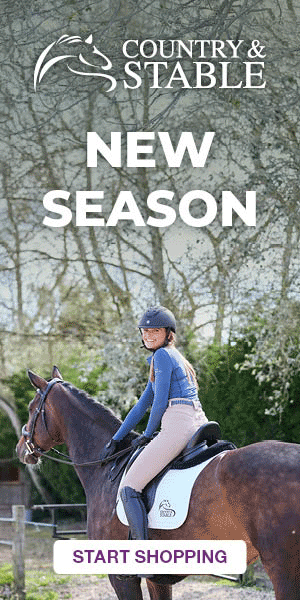The Complete Guide to Buying a Used Horsebox
Only one in five horseboxes passes a simple safety inspection. These numbers emphasise the risks you take when buying a used horsebox without proper guidance. The horsebox market lacks regulation and has no mandatory annual safety tests for the horse area. A wrong choice could cost thousands of pounds and put your horse’s safety at risk.
But here’s some good news. You can avoid these pitfalls by knowing what to look for when buying from used horsebox dealers or private sellers. The Sales of Goods Act 1979 gives you extra protection for dealer purchases. A Pre-Purchase Inspection (PPI) can save you money and ensure your horsebox stays safe and legal on the road.
This complete guide will show you everything about buying a used horsebox. We’ll cover safety checks, weight limits and help you make smart decisions to keep you and your horses safe during transport.
Setting Your Budget and Requirements
You should establish your requirements and budget before looking for used horseboxes. This preparation will help you avoid getting pricey mistakes and feeling let down later.
Determining what size horsebox you need
The horsebox size depends on the number of horses you plan to transport. A 7.5 tonne horsebox works best for two or more horses. These usually come with three stalls and different living area options. A 3.5 tonne horsebox might be enough if you have just one light horse or two ponies.
Your horsebox’s payload capacity plays a crucial role in your selection. This tells you the legal weight you can carry, which includes horses, people, tack, water and fuel. Here’s a simple calculation:
Payload = Maximum Authorised Mass (MAM) – Unladen weight
Note that horseboxes with luxury features tend to weigh more, so they reduce your payload capacity.
Creating your essential features list
The first step is to think over how you’ll use the horsebox—quick local rides, weekend competitions, or extended trips with overnight stays?
These factors matter most:
- Living space needs (day use vs sleeping areas)
- Storage room for tack and personal items
- Water tank and electric hook-up requirements
- Easy-access features like external storage or cut-through access
List your preferences by importance since you might need to make trade-offs based on what’s available or your budget.
Understanding the true cost of ownership
The purchase price starts the journey. You’ll also need to pay for:
- Insurance premiums
- MOT tests and maintenance
- Storage fees (could reach £100s yearly for off-site storage)
- Fuel costs and road tax
- Regular servicing
On top of that, you should plan for future repairs like floor replacement, which usually costs £600-£1000.
Setting a realistic budget
Many used horseboxes have high mileage, often hundreds of thousands of kilometres. This shouldn’t worry you if the previous owner managed to keep it well. Most horseboxes only cover about 4,000 miles each year.
Test all living area equipment including fridges, heaters, and toilets. Repairs can get pricey. You should also know about licence requirements for different sizes. This matters especially if you got your licence after January 1997, as you can only drive 3.5 tonne vehicles without taking extra tests.
The last step is to get an HPI certificate. This confirms the vehicle hasn’t been in accidents, isn’t stolen, and has no outstanding loans against it.
Where to Find Quality Used Horseboxes for Sale
You need to know where to look to find a quality used horsebox. Several options are available, and understanding what each source offers will help you make the right choice.
Reputable used horsebox dealers vs private sellers
10-year old dealers have clear advantages over private sellers. Dealers such as Central England Horseboxes keep their vehicles well-vetted and safety-checked before sale. Their used vehicles often come with warranties, but you should get written details about the coverage.
Private seller purchases give you no legal protection, so getting a horsebox specialist to inspect is a smart move. These sales can offer better value – just run an HPI check to make sure the vehicle isn’t written off or has finance owing.
Online marketplaces and auction sites
The search becomes easier with specialised online platforms. Horseboxmarketplace.com checks all listings and lets you explore options across the UK. Truckpages.co.uk organises vehicles in detail so you can find exactly what you need.
Bidspotter and other auction sites are options too, though quality varies. General classified sites have many listings, but they don’t verify quality much.
Equestrian shows and events
Shows and events are a chance to see multiple horseboxes in one place. You can inspect vehicles up close and talk to dealers directly, which makes comparing different options easier.
These events also let you get expert advice from people who know everything about moving horses safely.
Specialist horsebox publications
Trusted sellers connect with buyers through dedicated publications that show detailed specs. Horse and Hound gives advice about buying used horseboxes along with their listings. The website horseboxes.com keeps its Nottingham stock listings up to date.
Always call before viewing – stock moves faster and dealers usually need appointments. This extra step saves you from wasted trips and letdowns.
Essential Pre-Purchase Checks
“When physically looking over a horsebox with a view to purchase, there are a few easy and important things to look for. The floor in the horse area is a good place to start. Most horseboxes have a floor made out of exterior/marine plywood with rubber matting over the top.” — Central England Horseboxes, Leading UK horsebox dealer and manufacturer
Statistics show that only one in five used horseboxes pass simple safety inspections. You could save thousands in future repairs and ensure your horse’s safety by doing proper checks before buying.
Mechanical inspection checklist
You should get a professional Pre-Purchase Inspection (PPI) before buying any horsebox. Here are the simple mechanical checks needed:
- Look for oil leaks from the engine and make sure it starts without warning lights
- Test the brakes, clutch performance and suspension
- Check if tyres meet legal tread depth (minimum 1.6mm across ¾ of the breadth for vehicles under 3.5 tonnes)
- Make sure all lights, indicators, wipers and the horn work properly
Note that horseboxes with tilt cabs are easier to maintain, though older models might leak around seals.
Horse area safety assessment
The MOT testing doesn’t cover the horse area, so you need to check it carefully. Lift the rubber matting to check the floor for rot, dampness or weak spots. You should also look at the vehicle’s underside to check the subframe condition.
The ramp needs special attention – look for cracks or rust in hinges, springs and hydraulic ram mounts. Good ventilation keeps your horse comfortable during transport, so test these systems thoroughly.
Living quarters evaluation
Horseboxes with living space should have separate leisure batteries for their electrics to protect the main vehicle battery. Even if everything looks fine, test all appliances – fridges, heaters and water systems can cost a lot to fix.
Documentation verification
Match the V5C logbook details with the vehicle’s actual identification (registration, chassis number, colour, engine specifications). Ask for service history records to verify proper maintenance and correct mileage.
A detailed HPI check will tell you if the horsebox has been written off or has outstanding finance.
Test drive considerations
Take the horsebox for a test drive before buying. Pay attention to handling, braking and overall comfort. Listen carefully for strange noises that might signal mechanical problems.
Expert horsebox dealers say this organised approach often reveals hidden issues that affect safety and value.
Understanding Horsebox Weight Limits and Legal Requirements
“If you exceed the payload, you are breaking the law and potentially putting yourself, your horses and other road users at risk. An overloaded vehicle could compromise steering, braking, tyres, axles and even increase fuel costs and engine strain.” — Equitrek (Horsebox building experts, quoted by KBIS Insurance), Leading UK horsebox manufacturer, expert in equestrian transport
Weight limits play a significant role in buying a used horsebox. You risk prosecution, void insurance, and compromise road safety by overloading your vehicle.
Calculating payload capacity
The payload tells you how much weight you can legally carry. This includes horses, people, tack, water and fuel. Here’s a simple way to calculate it:
Payload = Maximum Authorised Mass (MAM) – Unladen weight
A public weighbridge helps you get accurate measurements. Weigh your empty horsebox first and then weigh it fully loaded. The difference shows what you really need.
A 7.5-tonne horsebox usually weighs between 4-6 tonnes when empty. This leaves about 1.5-3.5 tonnes for cargo. Two horses (about 600kg each), plus your tack, water and passengers can use up this allowance quickly.
Licence requirements for different horsebox sizes
Your licence category sets the limits for what you can drive:
- Category B: Vehicles up to 3.5 tonnes (standard car licence)
- Category C1: Vehicles between 3.5-7.5 tonnes
- Category C: Vehicles over 7.5 tonnes
People who passed their test before January 1997 automatically have C1 entitlement. Anyone who took the test after needs extra qualifications to drive vehicles over 3.5 tonnes.
Insurance considerations
Regular vehicle insurance won’t cover horseboxes—you need specialist policies. Several factors affect insurance costs:
- Vehicle’s value and how you use it
- Driver’s age and experience (under 21s pay more)
- Past claims history
You’ll need “hire and reward” coverage instead of standard “social, domestic and pleasure” insurance if you transport other people’s horses for payment.
MOT and maintenance records
Horseboxes need yearly MOT tests like other vehicles, but they require extra checks:
- The floor needs a full inspection as damage can hide under rubber matting
- Stalls, partitions and loading ramps need regular checks
- Load heavy items before MOT testing so brake tests give accurate results
Regular maintenance checks between official tests help keep your vehicle safe. Pay special attention to floors and hydraulic systems.
Conclusion
Buying a used horsebox needs you to think over many things – from safety checks to legal requirements. The right knowledge will help you make a smart choice that gives you both safety and value for your money.
Safety comes first when you’re looking at a used horsebox. Note that weight calculations, detailed pre-purchase inspections, and regular maintenance keep you, your horses, and other drivers safe. It also helps to know about licence rules and insurance to avoid legal issues down the road.
The process might look overwhelming at first. This piece shows you a step-by-step way to avoid common mistakes. Set a realistic budget first. Think about ongoing costs and make sure your chosen horsebox meets safety standards. Don’t skip any vital checks – especially the floor inspections and mechanical tests.
A quality used horsebox makes all the difference to your horses’ comfort and safety on the road. Research well, get proper inspections done, and ask experts when you need help. This careful approach will lead you to a horsebox that works great for years.

Welcome to Sell Your Horse, a platform dedicated to connecting equestrians with each other, making horse buying and selling easier and more transparent. With a focus on technology and community-building. My mission is to help like-minded equestrians find the right connections, share knowledge, and build a trusted equine network.





 Featured Listings
Featured Listings
 Adverts
Adverts
 Horses For Sale
Horses For Sale
 Tack & Equipment
Tack & Equipment
 Horseboxes & Trailers
Horseboxes & Trailers
 Equine Properties
Equine Properties
 4x4 Vehicles
4x4 Vehicles
 Horses For Loan
Horses For Loan
 Horses Wanted
Horses Wanted
 Stallions at Stud
Stallions at Stud
 Equine Services
Equine Services
 Riding Holidays
Riding Holidays

